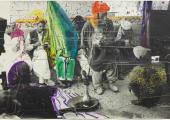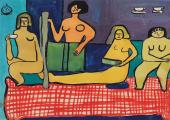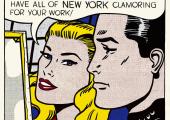Marlene Dumas: The Image as Burden, Tate Modern

A living painter who can compete with Manet and make images relevant to today
"My fatherland is South Africa, my mother tongue is Afrikaans, my surname is French, I don’t speak French. My mother always wanted me to go to Paris. She thought art was French because of Picasso. I thought art was American because of Artforum... I live in Amsterdam and have a Dutch passport. Sometimes I think I’m not a real artist because I’m too half-hearted and I never quite know where I am." (Marlene Dumas)









